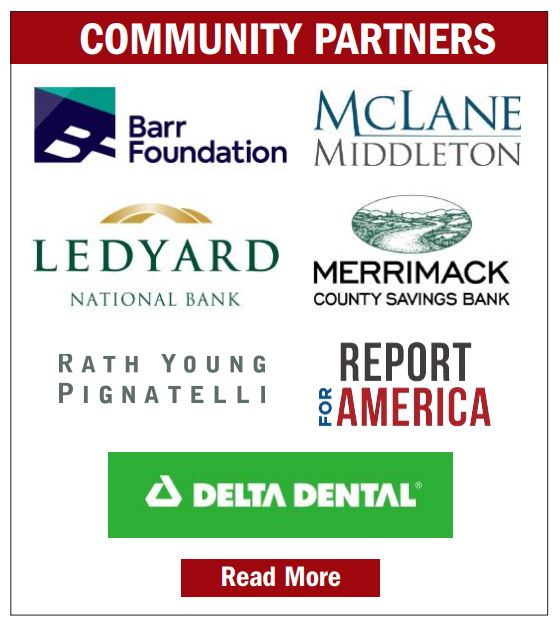Opinion: In the fight to stop sexual violence, can polio hold the solutions?

A “No Means No” banner is draped over the university’s seal at Texas Tech in 2014. Betsy Blaney
| Published: 05-17-2025 1:00 PM |
Molly McHugh is the Director of Communications at No Means No Worldwide, an organization dedicated to ending sexual violence. She lives in Orford.
Health workers in Pakistan, where cases of polio first began shooting up last year, are now going through treacherous conditions through snow-covered mountains and under militant threats just to administer vaccines.
Their strength and resolve during violence and disinformation remind us of what truly is required to combat a public health crisis: unwavering commitment, cooperation across borders and trust in evidence-based treatments. We should be learning from their courage to face another global health crisis: sexual violence.
When the world united to fight polio, it was solving one of the most infectious public health crises of the 20th century. Through sustained public awareness campaigns and persistent investment, we reduced cases of polio globally by 99%. In fact, polio exists today only in two countries: Pakistan and Afghanistan. That achievement is a blueprint for ending the global scourge of sexual violence.
While we eradicated polio in a majority of the world, sexual violence still exists and affects millions of people every year. Globally, one in three women experiences physical or sexual violence in their lifetime, while in the U.S., it’s estimated that one in six men has experienced sexual abuse or assault, whether in childhood or as an adult.
New Hampshire’s own reckoning with systemic sexual abuse at the Sununu Youth Services Center, where over 1,100 former residents have alleged abuse spanning decades, underscores the depth and persistence of this crisis.
Survivors tend to have multiple negative effects, like physical harm, chronic diseases, PTSD, depression, stigmatization, economic disruption and disharmonious relationships. What if we treated sexual violence with the same urgency and assurance of prevention as we gave to polio?
Article continues after...
Yesterday's Most Read Articles
The war on polio rested on the idea that it’s better to prevent than to cure. Vaccines weren’t a quick fix; they required trust-building, outreach to remote communities and sustained long-term commitment to a shared goal. Similarly, preventing sexual violence demands comprehensive strategies: empowering individuals, fostering a culture of respect and fortifying legislation and community systems. We already know what works, yet investment in prevention remains woefully inadequate.
Critics might argue that sexual violence is too entrenched to be eliminated. This pessimistic argument was echoed in the early days of skepticism about the polio vaccine. In the 1950s, it was assumed that vaccines would never reach enough communities or overcome cultural resistance. The skeptics were proven wrong, but only because the international community refused to accept failure as an option. Today, the same unified effort is needed to eliminate sexual violence, starting with the recognition that it is not inevitable.
The parallels between sexual violence and polio are remarkable. Both epidemics disproportionately victimize the most vulnerable individuals. Both demand systemic and cultural transformation to address root causes. Both demand large-scale coordination and investment. And both have been undercut by denialism.
Just as denial about the effectiveness of the polio vaccine threatens to set the clock back, brushing aside violence as unavoidable or merely cultural denies the growing evidence that prevention is effective, as reinforced by the United Nation’s RESPECT framework, which outlines tested and evidence-based strategies.
Community-based education programs that challenge harmful beliefs have proven effective, as have policies that hold perpetrators accountable and provide support for survivors. Other effective strategies include educational interventions like empowerment-based self-defense, which reduces violence by teaching individuals to recognize, resist and de-escalate potentially harmful situations, and parenting programs that provide resources for encouraging positive parenting in vulnerable families.
These efforts don’t just respond to violence; they prevent it.
Prevention is also economically sound. Eliminating polio saved billions of dollars in healthcare expenses and lost productivity and spared untold lives from pain. Sexual violence is also expensive to the economy: According to a 2014 CDC study, with about 25 million rape survivors in the U.S., we can expect to spend more than $3 trillion over their lifetimes on health care, criminal justice response, lost productivity and other costs (that’s over $4 trillion in today’s dollars).
But despite clear evidence, prevention efforts remain underfunded and undervalued. Public health leaders and policymakers must change course by treating sexual violence as the global public health crisis that it is.
If we believed in the potential for a world free from sexual violence and invested to that extent, we could transform the lives of millions. The tools already exist. What is missing is the political will and societal commitment to use them at scale — the same kind of will demonstrated by the health workers in Pakistan.
The world didn’t abandon eradicating polio because it seemed too big to solve. We believed prevention could happen, and so we acted. It’s time to act the same way on sexual violence. The stakes are too high for anything less.







 Opinion: Iran and Gaza: A U.S. foreign policy of barbarism
Opinion: Iran and Gaza: A U.S. foreign policy of barbarism Opinion: There’s no place like firearms-free zones
Opinion: There’s no place like firearms-free zones Opinion: Outlines of a new dystopia
Opinion: Outlines of a new dystopia Opinion: Speechless in America no more
Opinion: Speechless in America no more
